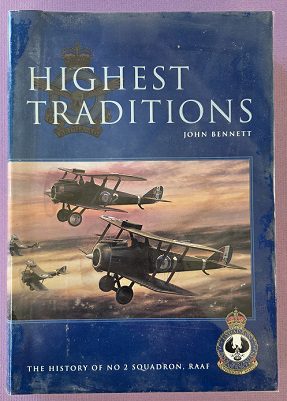Description
Title: The Gestapo Hunters: 464 Squadron RAAF 1942 – 1945
Author: Lax, Mark & Kane-Maguire, Leon
Condition: Near Mint
Edition: 1st Edition
Publication Date: 1999
ISBN: 1875593195
Cover: Hard Cover with Dust Jacket – 318 pages
Comments: The detailed history of No. 464 Squadron, RAAF during World War 2. Now long out of print and a scarce title.
464 Squadron, Royal Australian Air Force was formed, in accordance with Article XV of the Empire Air Training Scheme, at Feltwell in the United Kingdom on 1 September 1942. It was equipped with Lockheed Ventura light bombers and joined 2 Group of Bomber Command. The squadron’s first operation – an attack on the Phillips radio factory at Eindhoven in the Netherlands on 6 December 1942 – characterised its subsequent career in precision raids against point targets.
During early 1943 the squadron was involved in two distinct types of operations – “Ramrod” and “Flying Circus”. The objective of the first was simply the destruction of targets on the ground, whereas the aim of the second was to entice German fighters into aerial combat with the bomber escorts – the actual destruction of the targets on the ground was only a secondary objective. Reflecting the difference in the tactics employed by the light bombers, from the night time area bombing conducted by the heavy bombers, 2 Group was transferred to Fighter Command on 1 June 1943 and became part of the 2nd Tactical Air Force. By this stage, however, 464 Squadron’s Venturas were becoming increasingly vulnerable and its missions tailed off in July. The last Ventura mission was flown on the 10 July and on 12 July 1943 it was announced they would be replaced by De Havilland Mosquitos.
The versatility of the Mosquitos broadened 464 Squadron’s operational repetoire. It was employed in precision low-level bombing attacks against a wide range of targets, as well as a whole suite of new operations:
“Flower”: patrols to engage and destroy German night fighters;“Intruder”: patrols conducted just after sunset or just before dawn, aimed principally at German bombers; “Ranger”: aircraft roamed over enemy territory seeking targets of opportunity; and “No ball”: strikes against the assembly and launch facilities for V1 Flying Bombs.
The squadron’s most intensive period of operations was the period surrounding the D-Day landings on 6 June 1944, when it was primarily employed to attack German transport infrastructure such as trains, road and rail junctions, bridges, motor convoys and concentration areas.
464 Squadron also participated in several special raids. These included one on Amiens prison on 18 February 1944, mounted to release members of the French Resistance held prisoner there; a raid on the SS Barracks at Bonneuil-Mantours on 14 July 1944 in reprisal for the ill-treatment of Allied prisoners; and several attacks on Gestapo headquarters in Denmark.
The squadron was operating from Melsbroek in Belgium when the war in Europe ended on 8 May 1945. After the end of hostilities its aircraft were employed on escort missions over newly-liberated Europe for VIPs, including the British Prime Minister Winston Churchill, Crown Prince Olaf of Norway, and General Alfred Jodl who signed the surrender agreement for Germany in Berlin. 464 Squadron disbanded on 27 September 1945 having attacked 2,353 targets during its three year history.



